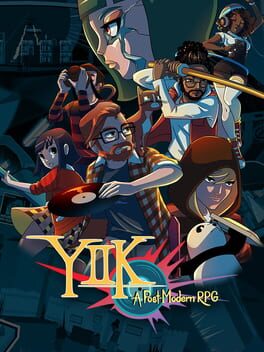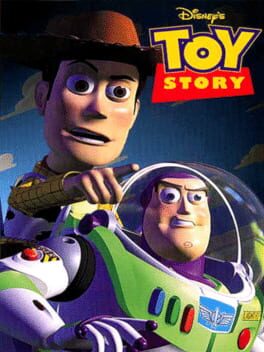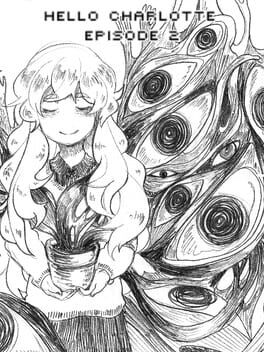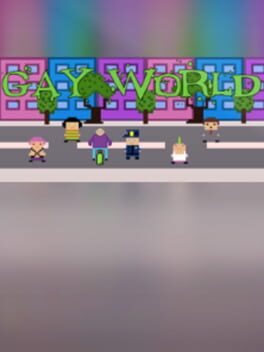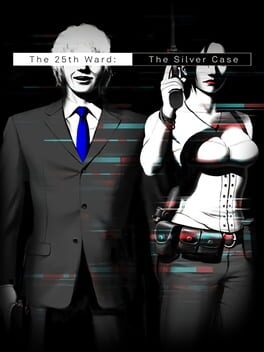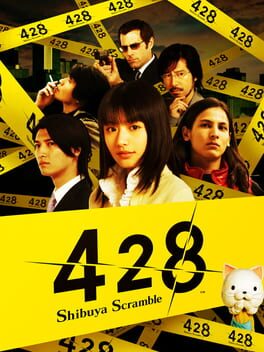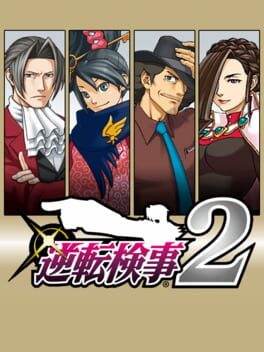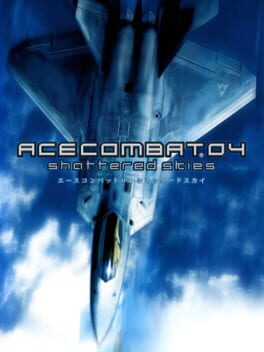Shem
1206 reviews liked by Shem
In Stars and Time
2023
(This is a rewrite of my first ever review on Backloggd! For posterity’s sake I’ll leave up that review here, but I don’t love it and I’m writing this review as an improvement on what I wanted to say back then.)
━━━━━━━━━
Before I played In Stars and Time in November of 2023, I played the proof-of-concept version, START AGAIN: a prologue a whole year and a half earlier, in April of 2022. I usually don’t play demos, especially not paid demos, but I’d been following this project based on the art style and I felt like it was something special. I liked the prologue well enough. It was charming and I was drawn to the characters. The prologue starts in medias res as the party prepare to defeat the “final boss”, the King, at the end of their JRPG journey. The catch is that the protagonist, Siffrin, is stuck in a time loop and nobody else in the party is aware. Despite this, Siffrin resolves to carry this burden alone, and to use this ability to defeat the King without worrying his allies.
My one big issue with this demo was that, although I liked him as a character, Siffrin’s decision to bottle up his feelings and keep the time loop a secret made no sense to me. It seemed contrived that he wouldn’t, even once, experiment with the time loop and tell his allies about what was going on. If it caused any issues, it wouldn’t matter – he could just loop back and START AGAIN. After the demo, I was a little disappointed but still hopeful the full release could turn my opinion around.
As the full release approached, I grew really excited. I’d been following the dev’s monthly dev logs on Steam up to release, and I bought the full game in the first week after it came out, a rare event for me. I finished it in 6 days, binging it between study sessions for my upcoming exams. I was hooked, and by the end of the game, In Stars and Time had fully recontextualized the demo.
Siffrin didn’t tell his party about the time loop because he loves them. He didn’t tell them because he refuses to be vulnerable.
When I played the demo I saw these characters from my omniscient point of view as the player, as little pawns to command in whatever way would progress the plot. Siffrin’s refusal to open up felt like an arbitrary obstacle put in place by the creator as if to say “but then we wouldn’t have a plot, would we?” But Siffrin isn’t the player, and he isn’t aware he exists in a video game. To him, the rest of the party aren’t pawns; they’re his allies. His friends. His family.
What’s more, Siffrin is incredibly repressed. He’s reserved, happy to nod along in the background because he believes that placing himself as the centre of attention will lead everyone to hate him as much as he hates himself. He sees himself as inherently less valuable than others, and takes the time loop to be his chance to martyr himself in service of his family.
I’m reminded of Jacob Geller’s video Time Loop Nihlism, wherein he talks about Deathloop and the way replaying a game desensitizes us. The more we play, the more we’re able to abstract NPCs from living, breathing people into gameplay systems. Our immersion fades with each repeat as cause and effect become predictable. This was the mindset I had playing the demo.
In Stars and Time actively subverts this idea. Siffrin refuses to allow nihilism to overtake him. Sure, if anything happened to a family member, he could reset the timeline and fix it. But in that moment, in that present moment, his family would suffer, and that suffering would be real. For the same reason we wouldn’t kill a person even though they’ll die sometime in the future anyways, Siffrin won’t let his family come to harm even though he can reset the harm they suffer. The time loop is his burden and his alone, and he will do everything in his power to allow his family to be happy for as long as he can.
In Stars and Time is repetitive. You will repeat the same dungeon over and over for the game’s entire runtime. You will fight the same enemies over and over. The same bosses. Siffrin’s family will repeat the same dialogue again and again. You will find the same items scattered throughout the dungeon. You will walk between the same rooms in the same layout looking for the same keys to progress. There are plenty of quality-of-life features to reduce frustration; you can loop to specific areas in the dungeon after dying, you can skip seen dialogue, and Siffrin retains levels between every loop while his family retain their levels at checkpoints within the dungeon. But, no matter what, you will repeat the same events over and over. You will be sent back and forth, and at several points you will progress to a certain point in the dungeon only to realize you had to do something in a now blocked-off area, forcing another reset. The ludonarrative is excellent and encourages the player to experience Siffrin’s frustrations alongside him.
This is why Siffrin’s character arc is so compelling. The whole game, he does his best to protect, long past the point the player has. Every so often he’ll make a major breakthrough, and his enthusiasm is extreme. This is it! He’s figured it out! That enthusiasm soon fades as his plans inevitably lead to more and more dead ends. Even Siffrin has his breaking point, and his growing disillusionment with the repetition, the monotony, makes him a fascinating tragic protagonist. I won’t say much because of spoilers, but the toll the time loop takes on his mental health, compounded with his poor self-esteem and inability to show vulnerability, make Siffrin an amazing and relatable protagonist.
I could praise everything about this game if I wanted to, but I chose to focus on Siffrin because his characterization is central to what makes In Stars and Time so engaging. I love its characters, its world-building, its music, its everything. Please, if what I’ve written above is at all interesting and you can stomach the repetition, you owe it to yourself to play In Stars and Time.
━━━━━━━━━
Before I played In Stars and Time in November of 2023, I played the proof-of-concept version, START AGAIN: a prologue a whole year and a half earlier, in April of 2022. I usually don’t play demos, especially not paid demos, but I’d been following this project based on the art style and I felt like it was something special. I liked the prologue well enough. It was charming and I was drawn to the characters. The prologue starts in medias res as the party prepare to defeat the “final boss”, the King, at the end of their JRPG journey. The catch is that the protagonist, Siffrin, is stuck in a time loop and nobody else in the party is aware. Despite this, Siffrin resolves to carry this burden alone, and to use this ability to defeat the King without worrying his allies.
My one big issue with this demo was that, although I liked him as a character, Siffrin’s decision to bottle up his feelings and keep the time loop a secret made no sense to me. It seemed contrived that he wouldn’t, even once, experiment with the time loop and tell his allies about what was going on. If it caused any issues, it wouldn’t matter – he could just loop back and START AGAIN. After the demo, I was a little disappointed but still hopeful the full release could turn my opinion around.
As the full release approached, I grew really excited. I’d been following the dev’s monthly dev logs on Steam up to release, and I bought the full game in the first week after it came out, a rare event for me. I finished it in 6 days, binging it between study sessions for my upcoming exams. I was hooked, and by the end of the game, In Stars and Time had fully recontextualized the demo.
Siffrin didn’t tell his party about the time loop because he loves them. He didn’t tell them because he refuses to be vulnerable.
When I played the demo I saw these characters from my omniscient point of view as the player, as little pawns to command in whatever way would progress the plot. Siffrin’s refusal to open up felt like an arbitrary obstacle put in place by the creator as if to say “but then we wouldn’t have a plot, would we?” But Siffrin isn’t the player, and he isn’t aware he exists in a video game. To him, the rest of the party aren’t pawns; they’re his allies. His friends. His family.
What’s more, Siffrin is incredibly repressed. He’s reserved, happy to nod along in the background because he believes that placing himself as the centre of attention will lead everyone to hate him as much as he hates himself. He sees himself as inherently less valuable than others, and takes the time loop to be his chance to martyr himself in service of his family.
I’m reminded of Jacob Geller’s video Time Loop Nihlism, wherein he talks about Deathloop and the way replaying a game desensitizes us. The more we play, the more we’re able to abstract NPCs from living, breathing people into gameplay systems. Our immersion fades with each repeat as cause and effect become predictable. This was the mindset I had playing the demo.
In Stars and Time actively subverts this idea. Siffrin refuses to allow nihilism to overtake him. Sure, if anything happened to a family member, he could reset the timeline and fix it. But in that moment, in that present moment, his family would suffer, and that suffering would be real. For the same reason we wouldn’t kill a person even though they’ll die sometime in the future anyways, Siffrin won’t let his family come to harm even though he can reset the harm they suffer. The time loop is his burden and his alone, and he will do everything in his power to allow his family to be happy for as long as he can.
In Stars and Time is repetitive. You will repeat the same dungeon over and over for the game’s entire runtime. You will fight the same enemies over and over. The same bosses. Siffrin’s family will repeat the same dialogue again and again. You will find the same items scattered throughout the dungeon. You will walk between the same rooms in the same layout looking for the same keys to progress. There are plenty of quality-of-life features to reduce frustration; you can loop to specific areas in the dungeon after dying, you can skip seen dialogue, and Siffrin retains levels between every loop while his family retain their levels at checkpoints within the dungeon. But, no matter what, you will repeat the same events over and over. You will be sent back and forth, and at several points you will progress to a certain point in the dungeon only to realize you had to do something in a now blocked-off area, forcing another reset. The ludonarrative is excellent and encourages the player to experience Siffrin’s frustrations alongside him.
This is why Siffrin’s character arc is so compelling. The whole game, he does his best to protect, long past the point the player has. Every so often he’ll make a major breakthrough, and his enthusiasm is extreme. This is it! He’s figured it out! That enthusiasm soon fades as his plans inevitably lead to more and more dead ends. Even Siffrin has his breaking point, and his growing disillusionment with the repetition, the monotony, makes him a fascinating tragic protagonist. I won’t say much because of spoilers, but the toll the time loop takes on his mental health, compounded with his poor self-esteem and inability to show vulnerability, make Siffrin an amazing and relatable protagonist.
I could praise everything about this game if I wanted to, but I chose to focus on Siffrin because his characterization is central to what makes In Stars and Time so engaging. I love its characters, its world-building, its music, its everything. Please, if what I’ve written above is at all interesting and you can stomach the repetition, you owe it to yourself to play In Stars and Time.
Disney's Toy Story
1995
Kind of bullshit throughout the whole runtime but has lots of very interesting technical feats under its belt. The Pizza Planet level is especially interesting, and the first person level is much smoother than anything else of its ilk on the console. Could definitely stand to be more playable in the grand scheme of things, but it's at least endearing.
for all its messy sci-fi tangles and caustic irony and sprawling mythologizing this felt raw and tender in a way that kind of really hurt. doubles down on the eminently alien as a ruse to make its naked human ugliness more potent when the time comes, presenting a scenario where the essence of all stress, tension, and threat is mundanely, terribly, crushingly adolescent at heart
a wealth of increased design hospitality baits a hostility that draws from acrid power dynamics, self-destructive altruism, loss of autonomy, strained health, and the uniquely miserable feeling of being a fucked up teenager. that its concluding act leads with its most insincere, grating posturing only to directly pivot into end times earnestness makes for one of the most convincing tonal portrayals of angst and isolation I can think of
instant teencore classic (deeply affectionate)
a wealth of increased design hospitality baits a hostility that draws from acrid power dynamics, self-destructive altruism, loss of autonomy, strained health, and the uniquely miserable feeling of being a fucked up teenager. that its concluding act leads with its most insincere, grating posturing only to directly pivot into end times earnestness makes for one of the most convincing tonal portrayals of angst and isolation I can think of
instant teencore classic (deeply affectionate)
Super Castlevania IV
1991
So far in this series, we have had a trilogy of frustrating, yet wonderful games on the NES (all the problems with Simon’s Quest aside), and two handheld titles that weren’t quite perfect, with Castlevania: The Adventure in particular being extremely flawed, but for what they were, they were pretty effective as the first handheld titles for the series. Oh yeah, and there was also that one arcade title as well, but shhhhh, we don’t talk about that game in this household. Now, after this slew of titles, it was about time that this series was brought to the next generation of systems, with Masahiro Ueno being up to the task, not only deciding to make the game less frustrating in comparison to previous games, but also making a game that would be a remake of sorts of the original Castlevania. So, after two years of development, Super Castlevania IV was released to the public, and has since been praised and enjoyed for many decades to come.
This is considered to be one of, if not THE best, game in the entire Castlevania series, and when you play it, you can definitely see why. I myself wouldn’t consider it the best game in the series, as there would be several games made later down the road that I would say I enjoyed a lot more then this game, but don’t think that I am saying this game is bad, because that couldn’t be further from the truth. In my opinion, this is what I would consider the PERFECT rendition of the original Castlevania, and it is executed flawlessly in practically everything that it sets out to do. Yeah, it is kind of a step back when compared to Castlevania III and the features that game introduced (which is understandable, but still), and some of the bosses can be a huge pain in the ass, but none of those things ruined my experience with what is the perfect way the Castlevania series could have entered the 16-bit era.
The story is… basically the exact same as the original Castlevania, which is completely fine, as you really don’t need a big story to get you into the action, the graphics are absolutely fantastic, not only having the perfect look for these gothic environments, but also having fantastic atmosphere, which can even be seen as early on as the intro cutscene and the title screen, the music is GODLY, with plenty of original tracks along with remixes of classic themes, and there are some real head-bangers to be heard from this, the control is… I’m not ready to gush about them just yet, we will get to them eventually, and the gameplay is a pretty good evolution of the classic formula, while keeping things mostly familiar for those who are coming from the previous games in the series.
The game is your typical 2D Castlevania title, where you travel through many different side-scrolling levels, whipping many different gothic monsters along the way, gathering hearts, sub-weapons, and items to help you deal with the many baddies seen throughout, and taking on many larger-then life bosses, with the bosses themselves having great variety, either being classic monsters we have seen before, or new types of monsters with their own gimmick. Yeah, the game sticks closely to the original formula from the original Castlevania, which is kind of a letdown, again, considering what Castlevania III brought to the table, but what makes up for this is how the game manages to take this formula and perfect it.
Playing through the game overall does feel a lot less frustrating then that of the original game, with there not being too many instances of cheap damage or deaths that you will encounter. Now don’t get me wrong, this game is still pretty damn hard (after all, it wouldn’t be a Castlevania game if it was easy), but a lot of the hardships you will encounter can be taken care of pretty easily, and you will feel responsible for the damage you take and deaths you suffer… well, most of the time anyway. There will be several bosses, especially towards the end, where you will have quite a difficult time with them, as they are relentless, but thankfully, with the help of the unlimited continues, they shouldn’t take too long for you to take down once you learn their patterns.
One of the defining features of this game, and one of the reasons that I absolutely adore it, is with the control. This game has the BEST control scheme out of any of the classic Castlevania games, and I wish the future games would’ve stuck to, but hey, at least we have it here. For all of the previous game, while the control was enough to get a hang of, it was still pretty limited, with a very stiff movement and being unable to change your jump in midair. Thankfully now, despite still have a somewhat stiff movement, you can change your direction in midair while jumping, as well as do things like jump onto stairs to help you get through places faster. It may not sound like much, but it does help out a lot, making the pacing much faster, and giving you an edge up over the enemies. And speaking of getting an edge up over the enemies, this also goes into your whip, which is the best that it has been and will ever be in any of these games. Not only does it still pack a punch and have a great length, especially with the powerups, but you can also whip it in 8 different directions, as well as being able to… flail it around like an idiot, for some reason. I don’t need to explain to you how helpful this maneuverability and attack range is, allowing me to get plenty of hits and kills in on enemies that, if the attacking was the same as the original game, I would never be able to do easily without some damage.
Overall, despite some slight hiccups to be found here and there, this is definitely the best entry in the Castlevania series so far, and one of the best in the entire series. If you were a fan of the original trilogy of games, or you want to experience the series but don’t know where to start, then I would highly recommend it, as I guarantee that you will have at least some fun with it. I can’t even think of an ending joke this time around, the game is just too good. Go play it. NOW.
Game #254
This is considered to be one of, if not THE best, game in the entire Castlevania series, and when you play it, you can definitely see why. I myself wouldn’t consider it the best game in the series, as there would be several games made later down the road that I would say I enjoyed a lot more then this game, but don’t think that I am saying this game is bad, because that couldn’t be further from the truth. In my opinion, this is what I would consider the PERFECT rendition of the original Castlevania, and it is executed flawlessly in practically everything that it sets out to do. Yeah, it is kind of a step back when compared to Castlevania III and the features that game introduced (which is understandable, but still), and some of the bosses can be a huge pain in the ass, but none of those things ruined my experience with what is the perfect way the Castlevania series could have entered the 16-bit era.
The story is… basically the exact same as the original Castlevania, which is completely fine, as you really don’t need a big story to get you into the action, the graphics are absolutely fantastic, not only having the perfect look for these gothic environments, but also having fantastic atmosphere, which can even be seen as early on as the intro cutscene and the title screen, the music is GODLY, with plenty of original tracks along with remixes of classic themes, and there are some real head-bangers to be heard from this, the control is… I’m not ready to gush about them just yet, we will get to them eventually, and the gameplay is a pretty good evolution of the classic formula, while keeping things mostly familiar for those who are coming from the previous games in the series.
The game is your typical 2D Castlevania title, where you travel through many different side-scrolling levels, whipping many different gothic monsters along the way, gathering hearts, sub-weapons, and items to help you deal with the many baddies seen throughout, and taking on many larger-then life bosses, with the bosses themselves having great variety, either being classic monsters we have seen before, or new types of monsters with their own gimmick. Yeah, the game sticks closely to the original formula from the original Castlevania, which is kind of a letdown, again, considering what Castlevania III brought to the table, but what makes up for this is how the game manages to take this formula and perfect it.
Playing through the game overall does feel a lot less frustrating then that of the original game, with there not being too many instances of cheap damage or deaths that you will encounter. Now don’t get me wrong, this game is still pretty damn hard (after all, it wouldn’t be a Castlevania game if it was easy), but a lot of the hardships you will encounter can be taken care of pretty easily, and you will feel responsible for the damage you take and deaths you suffer… well, most of the time anyway. There will be several bosses, especially towards the end, where you will have quite a difficult time with them, as they are relentless, but thankfully, with the help of the unlimited continues, they shouldn’t take too long for you to take down once you learn their patterns.
One of the defining features of this game, and one of the reasons that I absolutely adore it, is with the control. This game has the BEST control scheme out of any of the classic Castlevania games, and I wish the future games would’ve stuck to, but hey, at least we have it here. For all of the previous game, while the control was enough to get a hang of, it was still pretty limited, with a very stiff movement and being unable to change your jump in midair. Thankfully now, despite still have a somewhat stiff movement, you can change your direction in midair while jumping, as well as do things like jump onto stairs to help you get through places faster. It may not sound like much, but it does help out a lot, making the pacing much faster, and giving you an edge up over the enemies. And speaking of getting an edge up over the enemies, this also goes into your whip, which is the best that it has been and will ever be in any of these games. Not only does it still pack a punch and have a great length, especially with the powerups, but you can also whip it in 8 different directions, as well as being able to… flail it around like an idiot, for some reason. I don’t need to explain to you how helpful this maneuverability and attack range is, allowing me to get plenty of hits and kills in on enemies that, if the attacking was the same as the original game, I would never be able to do easily without some damage.
Overall, despite some slight hiccups to be found here and there, this is definitely the best entry in the Castlevania series so far, and one of the best in the entire series. If you were a fan of the original trilogy of games, or you want to experience the series but don’t know where to start, then I would highly recommend it, as I guarantee that you will have at least some fun with it. I can’t even think of an ending joke this time around, the game is just too good. Go play it. NOW.
Game #254
Super Castlevania IV
1991
Super Castlevania IV
1991
Second Castlevania game I tried after SotN, and a damn good one as well. Controls very, very nicely, and from the looks of the previous games this seems to have toned down the frustration levels significantly, though of course I'll have to see myself. Atmosphere, music and detail are all incredible too, making it yet another one of those early SNES titles to to a great job showing off what the console could do. Both of these games give me a wonderful impression of both the earlier and later Castlevania series, and I'll definitely be sure to check out more.
